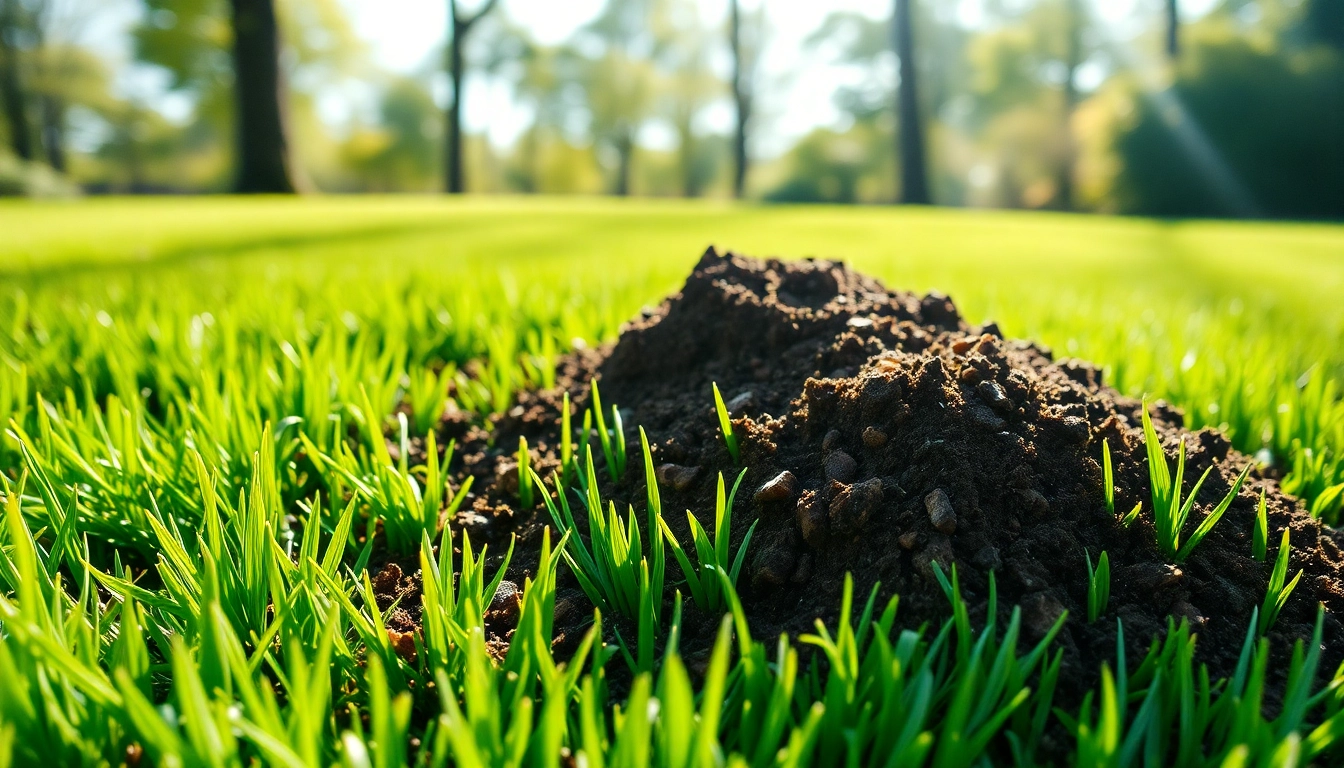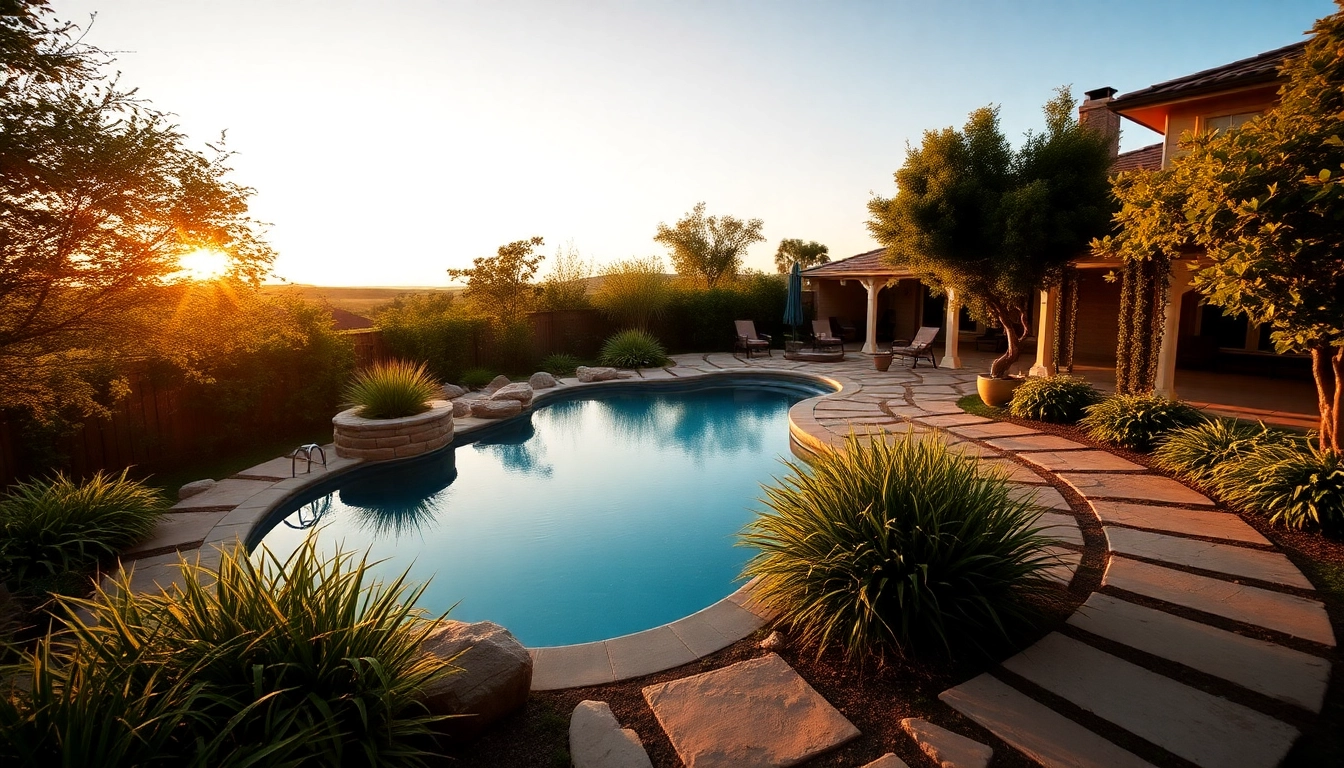Understanding Lawn Top Dressing
What is Lawn Top Dressing?
Lawn top dressing is a landscaping technique involving the application of a thin layer of soil, compost, or other nutrient-rich materials across the surface of a lawn. This practice is primarily aimed at improving the lawn’s overall health and appearance by altering soil composition, enhancing drainage, promoting new growth, and repairing damaged areas. Effectively, top dressing can rejuvenate tired lawns while fostering essential components like microorganisms and organic matter that help nourish grass roots. For those interested in enhancing their lawns, lawn top dressing is an excellent place to start.
Benefits of Lawn Top Dressing
Top dressing your lawn comes with a multitude of benefits:
- Improved Soil Quality: Top dressing enriches the existing soil with organic materials that introduce essential nutrients, thereby enhancing grass growth and resilience.
- Enhanced Drainage: A well-balanced top dressing mix improves soil structure, facilitating better water absorption and reducing runoff.
- Pest and Disease Resistance: Healthy lawns that receive proper top dressing are less prone to pests and diseases due to the improved overall health of the grass.
- Leveling the Lawn: Top dressing can help level out uneven areas in the lawn, reducing dips and mounds for a smoother appearance.
- Aesthetic Appeal: Regular top dressing results in a lush, vibrant lawn that enhances the overall landscape.
- Weed Suppression: Adding a layer of organic material helps impede weed growth by smothering existing weed seeds and inhibiting germination.
Types of Top Dressing Materials
Choosing the right top dressing material is vital for achieving the desired results. Some common materials include:
- Compost: Finished compost is rich in nutrients and microorganisms that enhance soil health.
- Topsoil: A good quality, weed-free topsoil can serve as an excellent base for top dressing.
- Sand: Sharp sand improves drainage capacities, particularly in clay-heavy soils.
- Peat Moss: Known for its water retention capabilities, peat moss can be beneficial in sandy soils.
- Specialty Blends: Many gardeners opt for a mixture of the above materials to achieve specific soil characteristics.
When to Top Dress Your Lawn
Optimal Seasons for Top Dressing
Timing your top dressing application is crucial for ensuring optimal benefits. Generally, the best times to top dress are in early spring and early fall. These are periods of active growth for most grass types:
- Early Spring: As the weather warms up, grass begins to grow more vigorously. Top dressing during this time provides essential nutrients that foster growth.
- Early Fall: As temperatures begin to cool, grass continues to grow, albeit at a slower rate. A top dressing application at this stage aids in preparing the lawn for dormancy.
Signs Your Lawn Needs Top Dressing
Identifying when your lawn requires top dressing involves assessing its condition. Look out for these signs:
- Compacted soil or hard spots where water runs off rather than soaking in
- Thinning grass or bare patches that have developed over time
- Uneven surfaces that may cause water pooling
- Excessive weeds or pests affecting your lawn’s health
Timing with Overseeding
When you’re considering overseeding, top dressing can play a crucial role. For best results, it’s advisable to top dress just after overseeding. This ensures that the new seeds have a nutrient-rich environment to germinate and grow, while also providing a protective layer that minimizes seed displacement due to wind or rain.
How to Prepare for Lawn Top Dressing
Tools and Equipment Needed
Before embarking on your top dressing project, ensure you have the following tools and equipment:
- Top Dressing Material: Select the appropriate top dressing material based on your lawn’s needs.
- Wheelbarrow: This is useful for transporting your top dressing material to various parts of the lawn.
- Shovels or Rakes: Essential for spreading the material evenly across the lawn’s surface.
- Drop Spreader or Broadcast Spreader: For large areas, using a spreader can help achieve uniform coverage.
- Watering Can or Hose: After application, light watering will help settle the material into the soil.
Pre-Treatment Lawn Care Steps
Before top dressing, prepare your lawn to maximize results:
- Mow the Lawn: Cut your grass shorter than usual to expose the soil more effectively.
- Weed Removal: Remove any existing weeds manually or using herbicides before applying top dressing.
- Water Thoroughly: Ensure that your lawn is well-watered leading up to the application, as it helps in settling the new material.
- Spike Aeration (optional): Aerating your lawn can enhance the benefits of top dressing as it allows the top dressing materials to penetrate the soil better.
Creating the Perfect Top Dressing Mix
Mixing your top dressing material correctly is essential for optimal results. A commonly recommended ratio for a top dressing mix is:
- 3 parts sharp sand
- 6 parts good quality topsoil (weed-free)
- 1 part compost or organic matter
This blend combines the drainage benefits of sand with the nutrient-rich quality of compost and the structure of topsoil, fostering an ideal growing environment.
Step-by-Step Guide to Top Dressing Your Lawn
Application Techniques for Uniform Coverage
To ensure a successful top dressing application, follow these steps:
- Spread Evenly: Using a shovel, rake, or spreader, apply the top dressing mix evenly across the lawn. Aim for a layer that is ¼ inch thick or less to avoid smothering the grass.
- Work in Sections: Divide your lawn into manageable sections, ensuring each is uniformly covered before moving to the next area.
- Level the Surface: After applying the dressing, use a leveling rake or the back of a shovel to smooth out any lumps or uneven areas.
Watering Your Lawn After Dressing
Once the top dressing is applied, it is important to water the area lightly. Watering helps settle the new material into the soil and provides moisture to both the existing grass and the new nutrients introduced. Aim to keep the lawn consistently moist for the first couple of weeks after application, easing up as the new growth establishes itself.
Maintaining Your Lawn Post Dressing
Post-dressing maintenance is key to maximizing the benefits of your effort:
- Avoid Heavy Traffic: After top dressing, limit foot traffic on the lawn to allow for optimal recovery.
- Regular Mowing: Keep mowing at regular intervals to maintain the desired height. This encourages lateral growth and helps thicken the lawn.
- Fertilization: Depending on the type of grass, you may want to apply additional fertilizers or nutrients in line with your top dressing.
- Monitoring: Keep an eye on lawn health, watching for signs of over-watering or nutrient deficiencies.
Common Questions About Lawn Top Dressing
Is Top Dressing Necessary for All Lawns?
Not all lawns require top dressing, but it can be beneficial for most, especially those showing signs of wear, unevenness, or nutrient deficiency. If you have a new lawn that has established well or a lawn that has been recently overseeded, it may not need top dressing immediately.
How Much Material Do You Need?
The amount of top dressing material needed depends on the size of your lawn and the thickness of the layer you wish to apply. Generally, estimate about 20 to 30 pounds of top dressing per 100 square feet for a ¼ inch application. Adjust calculations based on your lawn’s specific conditions.
Can You Top Dress Without Tilling?
Yes, top dressing can be accomplished without tilling. In fact, for established lawns, it’s typically recommended to apply top dressing without disturbing the existing grass or soil structure. Tilling may disrupt root systems and involve unnecessary work.

